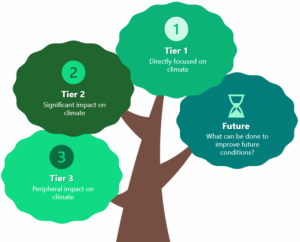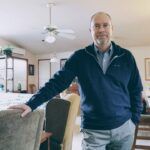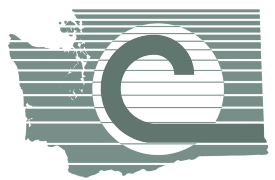How do we talk about climate change with landowners?
Conservation districts make it real
I love attending conservation district board meetings because that’s where real magic happens. It’s at the district layer that talk is dominated by practical, meaningful questions and solutions. As I heard at one meeting this week: “How do we bring climate change down from 30,000 feet to real things that people can do on their land?”
That call for making things real may sound like a repudiation of science and research. It’s not. Rather, it’s a plea for simpler talking points that will help landowners/operators connect with the need to do some things differently and perhaps for an easier onramp toward simple actions.
Rule #1: Do no harm
As I thought about this, my long-ago training as an emergency medical technician popped into mind. At that time I was a volunteer with a small group of folks in a very rural community. We had a small local hospital for minor issues. For bigger issues, transport via helicopter or at least an hour-long ambulance ride was needed. Our job was to get the patient to proper care. “Do no harm” is the common catchphrase that I’m sure you’ve heard before.
I think “do no harm” is a great place to start a climate conversation. That would mean having a conversation about current practices and helping the landowner/operator consider alternatives that may be more climate friendly. The newest phrasing for this is “climate smart” as illustrated in this news release: USDA Releases 90-Day Progress Report on Climate-Smart Agriculture and Forestry).
All conservation is local
Just as “all politics is local,” all conservation is local. What is most important in your community is going to be different from what neighboring communities focus on. I think that if I was trying to drill down on what programs my own conservation district should focus on, I would look first at the programs my district already provides. Why? Because those programs are probably already targeted toward the most evident needs and interests of your customers.
 My next step might be to consider the actual practices the district has been focusing on and ask which of these are aimed directly aimed at addressing climate change? I could call those Tier 1 activities. Reforestation (or afforestation) for the primary purpose of sequestering carbon might be an example.
My next step might be to consider the actual practices the district has been focusing on and ask which of these are aimed directly aimed at addressing climate change? I could call those Tier 1 activities. Reforestation (or afforestation) for the primary purpose of sequestering carbon might be an example.
Tier 2 might be the activities/practices that are addressing something other than climate but have a substantial impact on climate. Riparian restoration might be an example where the primary purposes are improving water quality and enhancing habitat, but all plantings that increase biomass are going to improve carbon storage.
Tier 3, then, could be other practices where there may be a small benefit to climate but the primary benefits are to other resources.
For the greatest natural resource impact, you might focus more energy on Tier 1 activities. But for uptake by your conservation district clients, you would also want to invest in Tier 2 practices.
Is your district climate smart?
Tiers 1, 2, and 3 look outward at what your customers do and what they need. What about also looking in the mirror? What do you see when you look inward at how your own conservation district operates? Can you identify opportunities to make your district more climate smart? For example:
- Can you add or buy into solar power?
- Can you replace fossil fuel vehicles with hybrids or electric vehicles?
- Can your food waste be composted and added to soil?
- Can you harvest rainwater?
- Can you replace old lighting with energy-efficient LEDs?
- Can the landscaping around your office provide more carbon storage?
Sometimes the best sales tool is for us to walk our talk so that we can show how something works and have hands-on information to share about the practice. Some people learn by hearing, some by reading or seeing, and some by hands-on experiences. Your presentations, your printed materials, and your field tours provide these opportunities to reach people in the ways that they take in information best.
Blaming creates barriers
When our customers feel like they are being blamed for a particular problem, the natural tendency is to deny and resist. We can’t help them create positive change if the words and behaviors we use make them feel blamed or ashamed. The mantra I recommend is no blame, no shame. Consider, too, that labels often convey a sense of responsibility, so let’s add no names to that list: no blame, no shame, no names. Our conversations about climate need to focus on what people can do, not what they may have done.

As a geologist, I may see the natural world through the lens of thousands of years instead of shorter periods like our lifetime. Most people see nature in brief glimpses, providing snapshot views of how the natural world is working. Just as with the stock market and populations, there is no steady state that represents an average. That means that our glimpses – sometimes delightful, sometimes alarming – don’t really tell the story accurately. Perhaps because of my view of the world, I prefer to not attribute changes in climate to particular human actions or behaviors. Instead, I prefer to simply ask: how can we do better in assuring a healthy climate for our people and creatures and crops, starting today and looking forward to future generations?
Climate hubs provide resources
A resource that may help stimulate your thinking is the Climate Hubs website by USDA. There are regional hubs for the entire country, including a Northwest Climate Hub that even has a climate podcast. I know you will get some great ideas from the podcast topics available for downloading and listening.
Tom Salzer, WACD Executive Director
